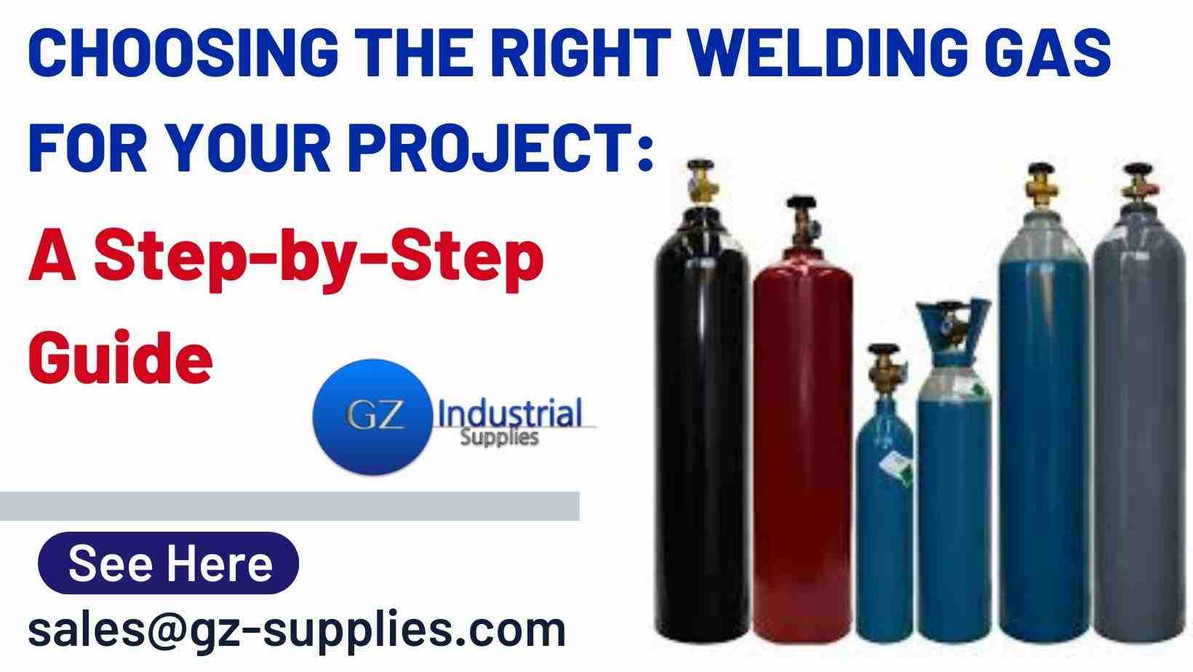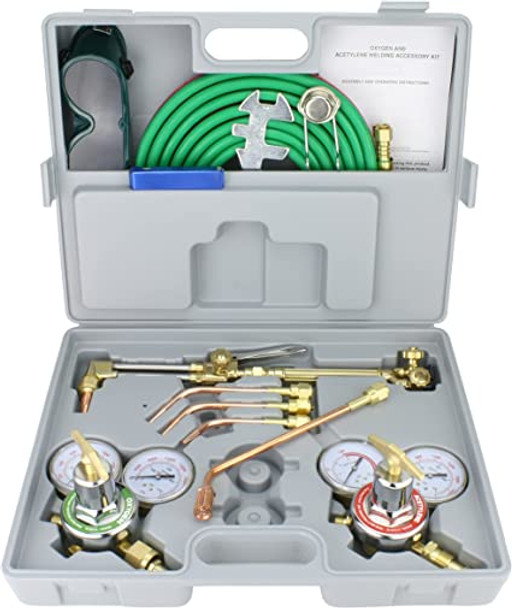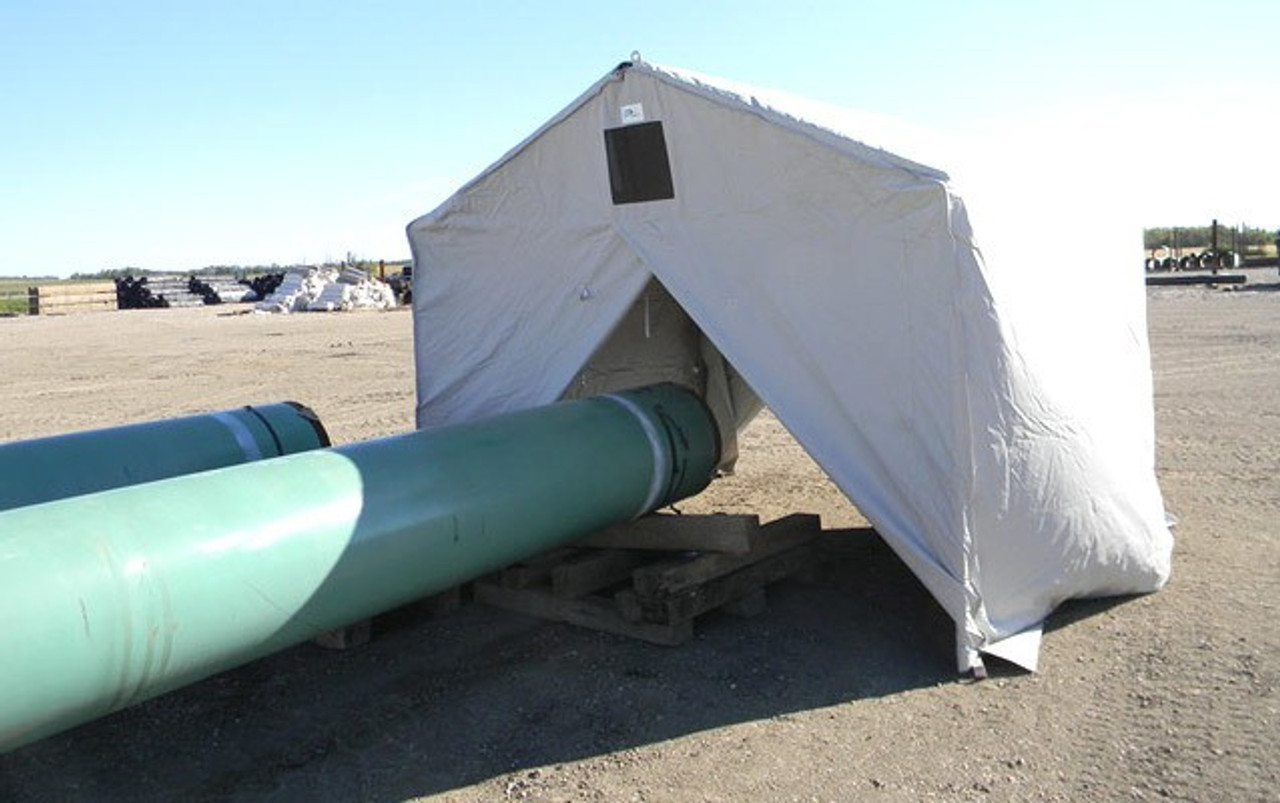Choosing the Right Welding Gas for Your Project: A Step-by-Step Guide
The success of any welding project depends on several factors, and one of the most critical is choosing the appropriate welding gas. Welding gases play a vital role in the overall welding process, affecting weld quality, penetration, arc stability, and overall efficiency. Different welding processes and materials require specific types of gases to achieve optimal results. Making the right choice ensures that the welds are strong, reliable, and meet the desired specifications. Each welding process and metal type requires specific gases to achieve optimal results, making the choice of welding gas a critical step in the welding process.
Welding gases such as Argon, Helium, Carbon dioxide and Oxygen are essential components in the welding process, serving various purposes to ensure the quality, efficiency, and safety of welds. These gases can be broadly categorized into two types: shielding gases and inert gases. Each type plays a crucial role in specific welding techniques and materials, and understanding their applications is vital for successful welding operations.
Argon is the most commonly used shielding gas in various welding processes, including Gas Tungsten Arc Welding (GTAW), Gas Metal Arc Welding (GMAW), and some forms of Gas Tungsten Arc Welding (GMAW). In GTAW (TIG welding), argon is the preferred gas for most metals, as it provides excellent arc stability and produces clean, high-quality welds. Additionally, argon is often blended with other gases, such as helium or hydrogen, to tailor its properties for specific applications.
Whether you are a seasoned welder or a novice just stepping into the world of metal fabrication, navigating the wide array of welding gases available can be overwhelming. Different gases offer unique characteristics and functions, ranging from enhancing weld quality to providing the necessary shielding and arc stability.
In this comprehensive step-by-step guide, we will walk you through the process of choosing the right welding gas for your project. We will cover essential considerations, gas types for specific welding techniques, and tips to ensure you make an informed decision. By the end of this guide, you will have a clear understanding of how welding gases influence your welding outcomes and be equipped to select the ideal gas for your welding endeavors.
Join us as we delve into the world of welding gases and unravel the mysteries behind these essential components of successful welding operations.
Understanding Welding Gases
Welding gases can be broadly categorized into two types: shielding gases and inert gases. Shielding gases, such as argon, carbon dioxide, and helium, protect the welding area from atmospheric contamination during the welding process. Inert gases, primarily argon and helium, do not undergo chemical reactions with other elements and are used to maintain arc stability and control heat input during welding.
Shielding gases create a protective atmosphere around the welding arc, preventing the molten metal from reacting with oxygen, nitrogen, and other elements in the air. This protection ensures that the weld remains clean and free from defects, resulting in strong and durable welds while Inert gases, especially argon and helium, are used in welding processes where precise control of the weld pool and heat input is essential. They provide stability to the welding arc, reducing the chances of spatter and enhancing weld quality. Inert gases are often used in Gas Tungsten Arc Welding (GTAW) to achieve precise and high-quality welds in materials like stainless steel and aluminum.
How to choose the right welding gas for your Project
A. Identifying the welding process used
Before selecting a welding gas, it is crucial to identify the welding process that will be used in your project. Different welding processes, such as Gas Metal Arc Welding (GMAW), Gas Tungsten Arc Welding (GTAW), and Metal Inert Gas (MIG) welding, have specific gas requirements. For example, GMAW typically uses a mixture of argon and carbon dioxide or argon and oxygen, while GTAW often relies on pure argon or argon-helium blends.
B. Determining the type of metal being welded
The type of metal being welded is a critical factor in choosing the appropriate welding gas. Materials like carbon steel, stainless steel, aluminum, and copper alloys each have specific gas requirements to achieve the desired results.
C. Analyzing joint characteristics and thickness
The characteristics of the joint, such as its design and thickness, also influence the choice of welding gas. Different gases have varying penetration capabilities, and the joint configuration will determine the gas's effectiveness in ensuring proper fusion and weld quality.
Hellog Oxygen, Acetylene Gas Cutting, Welding and accessory kit.
Types of Welding Gases for Specific Techniques
A. Gas Metal Arc Welding (GMAW) Gases
- Advantages and applications
Gas Metal Arc Welding (GMAW), commonly known as MIG welding, offers high welding speeds and excellent productivity. It is suitable for a wide range of materials and can be used for both thin and thick metal sections. GMAW is widely used in industries such as automotive, fabrication, and general manufacturing.
- Common GMAW gas mixtures
GMAW often uses a mix of shielding gases to achieve specific results. Common mixtures include argon-carbon dioxide blends for carbon steel, argon-helium for stainless steel, and argon-oxygen for aluminum.
Oxygen Gas (industrial) welding gas 50 litres Returnable empty Cylinder
B. Gas Tungsten Arc Welding (GTAW) Gases
- Benefits and recommended gases
Gas Tungsten Arc Welding (GTAW), also known as TIG welding, is favored for its precise control and high-quality welds. It is commonly used in critical applications where weld integrity and appearance are paramount, such as aerospace and nuclear industries. Pure argon or argon-helium blends are commonly used in GTAW for various materials.
- Specialty gases for GTAW
For specific applications, GTAW can benefit from specialty gases such as argon-hydrogen for improved heat distribution or argon-helium-hydrogen for enhanced weld penetration.
Argon Gas Compressed for shielding/welding 50 litters cylinder (empty returnable)
C. Metal Inert Gas (MIG) Welding Gases
- Suitable gases for MIG welding
Metal Inert Gas (MIG) welding, a type of GMAW, uses an electrode wire that continuously feeds into the welding arc. A variety of gases can be used for MIG welding, including pure argon for non-ferrous metals like aluminum and argon-carbon dioxide blends for carbon steel.
- Gas blends for specific metals
Certain applications may benefit from customized gas blends, such as argon-helium-carbon dioxide mixtures for stainless steel.
Helium gas (Returnable empty Cylinders when empty) 50 liters cylinder
Safety Tips and Handling precautions for Welding Gas Cylinders
A. Proper storage and transport guidelines
Welding gas cylinders require careful handling, storage, and transportation to ensure safety. Understanding safety guidelines and best practices is essential to prevent accidents and potential hazards.
B. Safety precautions during gas handling
When working with welding gases, it is crucial to follow safety protocols, including wearing appropriate personal protective equipment (PPE) and ensuring proper ventilation in the workspace.
Understanding Welding Gas Regulations
A. Compliance with industry standards
Familiarize yourself with welding gas regulations and industry standards to ensure that your welding operations meet safety and quality requirements.
B. Safety certifications and approvals
Purchase welding gases from reputable suppliers who provide gas cylinders with appropriate safety certifications and approvals.
Environmentally-Friendly Welding Gas Options
A. Sustainable and eco-friendly alternatives
With increasing environmental concerns, explore eco-friendly welding gas options that reduce greenhouse gas emissions and contribute to a greener future.
B. Benefits and considerations
Understand the advantages and considerations of using environmentally-friendly welding gases to make informed decisions for your welding projects.
Hellog Welders Tent
Conclusion
Mastering the art of choosing the right welding gas is a critical skill for any welder or aspiring welding enthusiast. By understanding the distinct roles of shielding gases and inert gases, and their applications in various welding processes, you can elevate the quality and efficiency of your welding projects.
Through this step-by-step guide, we have explored essential factors to consider, such as the welding process used, the type of metal being welded, and joint characteristics. Armed with this knowledge, you are empowered to make informed decisions that align perfectly with your project requirements, resulting in impeccable welds that meet industry standards.
Remember, each welding gas serves a specific purpose, and by matching the appropriate gas to your welding process and materials, you can achieve superior weld quality and enhance the overall success of your projects.
As you embark on your welding journey, continuously expand your understanding of welding gases, industry regulations, and best practices. Stay up-to-date with advancements in welding technology and environmentally-friendly options, striving to improve your welding skills and techniques.
Incorporate safety as an integral part of your welding practices, adhering to proper gas handling, storage guidelines, and industry safety standards. Respect the potential hazards associated with welding gases and always prioritize the well-being of yourself and those around you.
So, take a deep breath, ignite the torch, and with the knowledge gained from this guide, embark on your welding adventures with confidence and enthusiasm. Your welding journey is only just beginning, and the possibilities are endless. May your welds be masterpieces, and may your passion for welding continue to fuel your success.
Contact GZ Industrial supplies for more enquiries.
Recent Posts
-
The Ultimate Guide to Understanding the Difference Between Ethylene Glycol and Propylene Glycol
Introduction Glycols are versatile compounds widely used across various industries, from automotive …Apr 16, 2025 -
What are Agricultural Machinery
Introduction Agricultural Machinery is also used to improve the wide range of production prac …Apr 14, 2025 -
The Best Electrical Wire in Nigeria 2025 (Updated)
Introduction Electrical wires are the basic unit of every electrical system. Electrical wires …Apr 14, 2025









